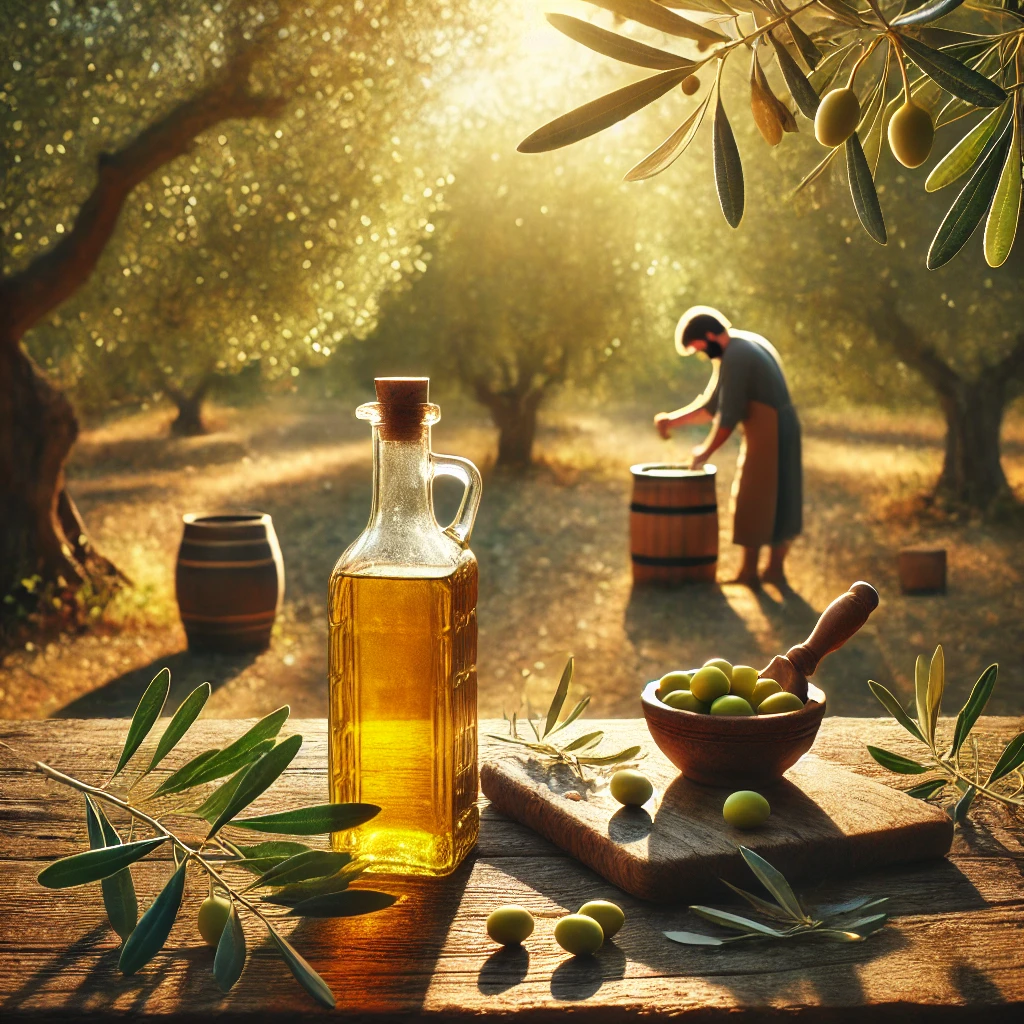DIY Olive Oil: A Step-by-Step Guide
DIY Olive Oil: A Step-by-Step Guide
DIY Olive Oil: A Step-by-Step Guide
DIY Olive Oil: A Step-by-Step Guide
21. November 2024
Feedback: 0
Making your own DIY olive oil may sound like a big challenge at first, right? But don’t worry! With a few simple tips and tricks, you can not only make olive oil from the olives in your own garden but also feel proud of enjoying your very own fresh oil.
🌟 And the best part 🌟
You don’t even need an expensive machine to get started! If you don’t have an olive tree yet, you can check out Fast Growing Trees – they offer a large selection of olive trees and deliver directly to your home. In this blog post, I’ll show you how to produce olive oil step by step – both with and without a machine.
Why Make Your Own Olive Oil?

If you live in a place where olive trees adorn your garden, you might be wondering: “Why should I make olive oil myself?” The answer is simple: it’s fun, you know exactly what’s inside, and you can create your own flavor! Homemade olive oil also has a special freshness that you just can’t buy in stores. And let’s be honest, how cool is it to tell your guests, “Yes, this oil is from my own garden!” – definitely a great conversation starter!
Step 1: Harvesting the Olives
Before we dive into the process, we first need to harvest the olives. Keep in mind, the earlier you pick them, the more intense and bitter the oil will be. If you prefer something milder, wait until they turn a rich, dark color. The best time to harvest is in late fall, around October and November.
✪ Tips for the olive harvest ✪
◉ Careful selection: Choose only the best olives, as damaged or unripe fruit will affect the quality of the oil.
◉ Hand harvest: It is best to harvest the olives by hand to avoid damaging the fruit and to preserve the quality.
Although there are many different olive varieties, the “Arbequina”, “Picual” and “Hojiblanca” varieties are particularly suitable for oil production. As olive trees also prefer sunny, warm and dry locations, they are ideal for the conditions in Spain. You can either pick the olives very carefully and gently by hand or, if you want to make things a little easier for yourself, you can gently knock them off the branches with a stick and then drop them onto a net placed underneath to collect them.
Step 2: Preparing the Olives
Once you’ve harvested the olives, it’s important to wash them thoroughly to remove any dirt and insects. Some people choose to pit the olives to make processing easier – but this isn’t a must.
✪ Pitting the Olives (Optional) ✪
◉ Pro: The oil will be milder and clearer
◉ Con: It takes longer and requires more effort.
Step 3: Processing – With or Without a Machine?
Here’s the exciting part: How do you actually make your own olive oil? You can either go the traditional route or use a modern machine to make your life easier. I’ll explain both methods!
With a Machine – The Easy Way
If you have an olive mill or a small oil press at home, this is the quickest and most efficient way to make olive oil. These machines grind the olives into a paste and separate the oil from the solid bits.
Step-by-Step with a Machine
◉ 1. Put the washed olives into the mill
◉ 2. Let the machine grind the olives into a paste
◉ 3. The paste then goes into a centrifuge that separates the oil from the rest of the paste.
◉ 4. Voila – your fresh, homemade olive oil is ready!
Without a Machine – The DIY Way
No worries, you can still make olive oil without a machine. The traditional way is a bit more labor-intensive, but you’ll be pleased with the result!
Step-by-Step Without a Machine
◉ 1. Use a mortar and pestle or a large hand mill to crush the washed olives into a thick paste.
◉ 2. To extract the oil, use a cloth. Place the paste in a linen cloth and twist it to squeeze out the oil.
◉ 3. Alternatively, you can put the paste in a sieve and press it down to let the oil drip out.
◉ 4. Let the oil sit in a glass container to settle, and then enjoy your fresh, pressed oil!
Even if it takes longer, it’s a great way to make your own olive oil – ideal for small quantities.
Step 4: Storage and use
Now that you have made your own olive oil, the question is: how do I store it properly? The fresh oil should be stored in an airtight glass container in a cool, dark place. This will keep it fresh for longer.
Use of olive oil:

Whether you use it in the kitchen for salads, for cooking or as a dip – or even for cosmetic purposes! Your own olive oil is definitely a real all-rounder. Here are a few ideas on how you can use it in a variety of ways:
◉ For the skin: Use it as a moisturizer or as a natural make-up remover.
◉ For the hair: Use it as a nourishing hair treatment to give your hair shine and moisture.
◉ For the Kitchen: Ideal for salads, dips or simply to refine dishes.
◉ For the massage: It is ideal as a soothing massage oil.
Olive oil is a true all-rounder and should be in every household!
✪ Tips for oil extraction ✪
◉ Cold pressing: Cold pressing is used for high-quality olive oil. The oil is extracted at low temperatures in order to preserve the valuable ingredients and taste.
◉ Centrifugation: After pressing, the olive oil is separated from water and pulp residues by centrifugation.
Conclusion Own olive oil – a worthwhile project
Making your own olive oil requires a little effort, but in the end the result is definitely worth the effort. You get a natural, high-quality oil that you can use in a variety of ways. Try it out and enjoy the taste of your homemade olive oil.
Have fun trying it out and ¡buen provecho!
Have you already discovered the recipe that combines German and Spanish cuisine? Comment on your experience and share it with your friends.
Your Steffi & Marius

Wir sind zwei deutsche Auswanderer und auf emigres-life nehmen wir Dich mit auf unsere Reise in ein neues Leben.
In unserem Projekt schwingt das Pendel meist in Richtung stressig oder chaotisch und weniger in Richtung tiefenentspannt.
Wenn du also wissen willst, in welches Fettnäpfchen wir als nächstes treten oder welche Hürden vor uns liegen und wie wir sie überwinden, dann bleib dran.
Nächster Blogpost
Die 5. atemberaubendsten Weihnachtsmärkte in Valencia

 Pin it!
Pin it!

